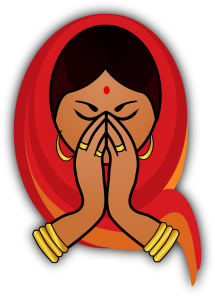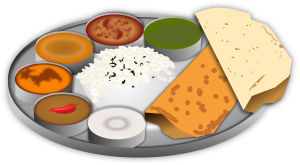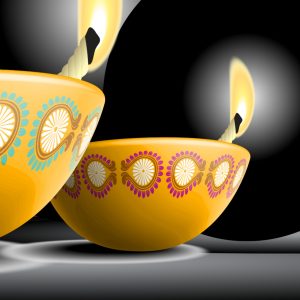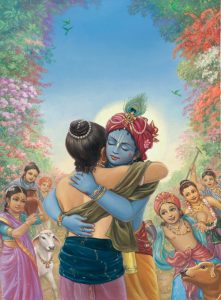

From a lecture given at Śrī Keśavajī Gauḍīya Maṭha in Mathurā on February 6, 1992 by Śrīla Bhaktivedānta Nārāyaṇa Mahārāja (Śrī Hari-kathāmṛta Volume Two)
Yesterday, after lecturing on Śrī Bṛhad-bhāgavatāmṛta for approximately two and a half years, we finally 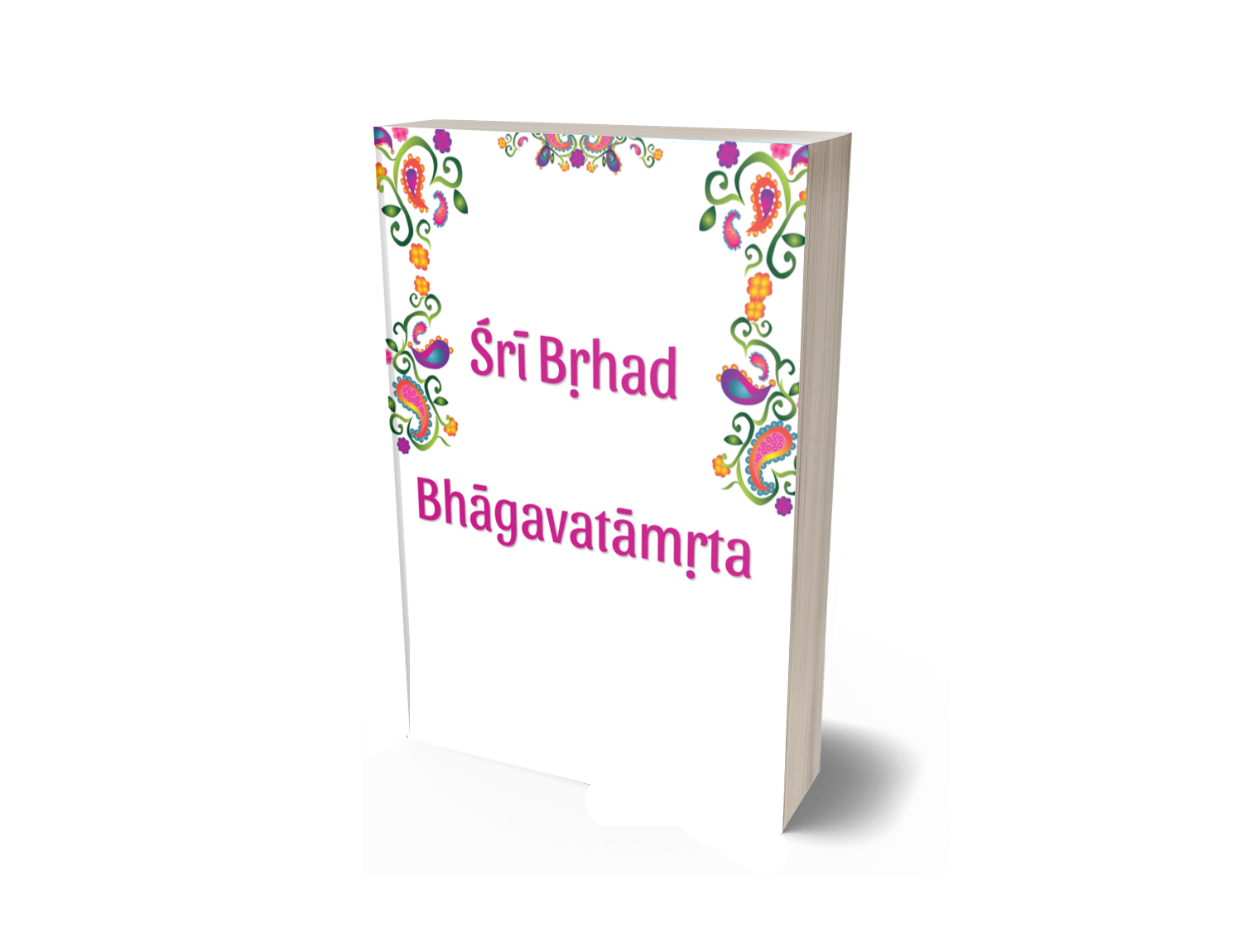 completed this great scripture, but in one sense we are only starting it. If we can establish within ourselves the conceptions given in this book and if we can apply its instructions in our daily lives, our lives will surely be successful. By hearing these narrations from his guru Jaimini Ṛṣi, Janamejaya’s life became fully successful. If we hear this kathā as he did and follow the instructions given therein, our lives will become similarly successful. But if this kathā enters our ears and then, as if bouncing off a wall, simply exits our ears without entering our hearts, there will be no special gain for us. Unfortunately, many of us are like this. But after all this time I feel that we have made at least some sincere effort to enter into this exalted scripture, and especially I have come to understand how Bṛhad-bhāgavatāmṛta is an unprecedented literature. If someone truly understands the Śrīmad-Bhāgavatam, then they must have first studied this book. If someone is truly engaged in sādhana, then they must have studied this book. If someone is conversant with bhakti-tattva, with rasa and especially with vraja-prema, then they must have certainly studied this book very carefully.
completed this great scripture, but in one sense we are only starting it. If we can establish within ourselves the conceptions given in this book and if we can apply its instructions in our daily lives, our lives will surely be successful. By hearing these narrations from his guru Jaimini Ṛṣi, Janamejaya’s life became fully successful. If we hear this kathā as he did and follow the instructions given therein, our lives will become similarly successful. But if this kathā enters our ears and then, as if bouncing off a wall, simply exits our ears without entering our hearts, there will be no special gain for us. Unfortunately, many of us are like this. But after all this time I feel that we have made at least some sincere effort to enter into this exalted scripture, and especially I have come to understand how Bṛhad-bhāgavatāmṛta is an unprecedented literature. If someone truly understands the Śrīmad-Bhāgavatam, then they must have first studied this book. If someone is truly engaged in sādhana, then they must have studied this book. If someone is conversant with bhakti-tattva, with rasa and especially with vraja-prema, then they must have certainly studied this book very carefully.
Śrīla Sanātana Gosvāmī is not a mere sage but one of Śrī Kṛṣṇa’s eternal associates, and not an ordinary one at 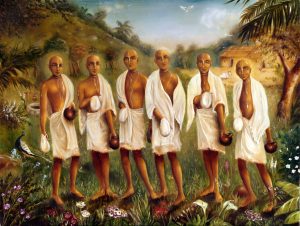 that. He is a very elevated and intimate member of Kṛṣṇa’s inner family, those who can even order Kṛṣṇa what to do and what not to do. His Bṛhad-bhāgavatāmṛta consists of two parts, both telling an excellent story of a parivrājaka, one who doesn’t keep a fixed residence and constantly wanders in search of the essence of life. In the first part the parivrājaka is Nārada Ṛṣi and in the second part it is Gopa-kumāra. In the first part Nārada sets out on a journey to determine who is the utmost recipient of Kṛṣṇa’s mercy. First he went to Prayaga, then to a king in South India, and then successively to Indra, Brahmā, Śaṅkara, Prahlāda Mahārāja, Hanumān, the Pāṇḍavas, Uddhava in Dvārakā, and finally the story culminates in the pastime of constructing the Nava-vṛndāvana. There it was revealed that the gopīs are the greatest objects of Kṛṣṇa’s love, and the best gopī is Śrīmatī Rādhikā. Upon seeing a mūrti of Her, Kṛṣṇa went mad. When Kṛṣṇa sees Rādhikā, his beauty and sweetness increase to their highest limit. So Nārada concluded that if in all the three worlds there is someone who is the most dear to Kṛṣṇa, it must be Śrīmatī Rādhikā.
that. He is a very elevated and intimate member of Kṛṣṇa’s inner family, those who can even order Kṛṣṇa what to do and what not to do. His Bṛhad-bhāgavatāmṛta consists of two parts, both telling an excellent story of a parivrājaka, one who doesn’t keep a fixed residence and constantly wanders in search of the essence of life. In the first part the parivrājaka is Nārada Ṛṣi and in the second part it is Gopa-kumāra. In the first part Nārada sets out on a journey to determine who is the utmost recipient of Kṛṣṇa’s mercy. First he went to Prayaga, then to a king in South India, and then successively to Indra, Brahmā, Śaṅkara, Prahlāda Mahārāja, Hanumān, the Pāṇḍavas, Uddhava in Dvārakā, and finally the story culminates in the pastime of constructing the Nava-vṛndāvana. There it was revealed that the gopīs are the greatest objects of Kṛṣṇa’s love, and the best gopī is Śrīmatī Rādhikā. Upon seeing a mūrti of Her, Kṛṣṇa went mad. When Kṛṣṇa sees Rādhikā, his beauty and sweetness increase to their highest limit. So Nārada concluded that if in all the three worlds there is someone who is the most dear to Kṛṣṇa, it must be Śrīmatī Rādhikā.
In the second part Gopa-kumāra tells his own ātma-kathā, the story of how he progressed from the first step in spiritual life up to the final destination. He took birth at Govardhana in a family of cowherd people and he was not educated in the least. One day he met a personality who, unknown to him at the time, was a great devotee. He started serving that devotee by giving him milk, yoghurt and butter and by bringing him water. Then one day with great love this devotee gave him the gopāla-mantra and became his guru. The gopāla-mantra is a mantra that can bestow perfection; some call it the kṛṣṇa-mantra. After giving Gopa-kumāra this mantra, his guru fell unconscious without having instructed him on how or when to chant the mantra and without explaining the glories of it. Still, Gopa-kumāra’s faith was so strong that he was confident that the mantra would bestow the fruit of all spiritual perfection upon him. A disciple’s faith in the mantra given to him by his guru should be complete; otherwise the seed that has been planted within him by the guru cannot grow. Many times devotees ask the meaning of this mantra and how it should be chanted and so on. I asked my own guru, Śrīla Bhakti Prajñāna Keśava Gosvāmī Mahārāja, this question, and he simply replied, “Just understand this mantra to be capable of bestowing perfection; all else will be revealed by the mantra itself.” So a disciple should simply chant the mantra with full faith, and then his bhajana will be proper.
By chanting his mantra faithfully, Gopa-kumāra crossed one level after another on the path to perfection. As a  sādhaka progresses, his devotion is compared to a lotus flower which is gradually blooming and becoming fragrant. As he progresses, he will feel his spiritual pleasure (ānanda) increasing step by step and see how the lotus of his bhakti is gradually blooming and becoming more and more beautiful and fragrant. But if a sādhaka doesn’t keep in mind the aim and intention of his sādhana, then it will seem that nothing is being achieved and it is all useless. Just as one eats, feels satisfaction and then later feels the desire to eat again, as we arrive at each progressive step in sādhana some fruit will be there. But if we are not practising sādhana in the correct way, we will not attain these fruits. Due to this many people take up the path but after some time lose hope and go away. Suppose a seed has been planted, and as that seed is watered and grows, weeds will grow alongside it. If not nurtured properly, the seedling will eventually become dried out and stop growing while the weeds continue to grow. Similarly, if a devotee engaged in nāma-bhajana doesn’t endeavour to remove from his heart whatever worldly desires which may exist there, these desires will intensify and will eventually cover his devotional creeper and destroy it. If a devotee chants “Hare Kṛṣṇa, Hare Kṛṣṇa” thinking, “I want money, I want money,” his devotional creeper will be finished. Some of these desires remain hidden deep within us, and we are embarrassed even to speak of them. Beware—if you want to do sādhana-bhajana, then like Gopa-kumāra you should not harbour any desire for anything within all of material existence.
sādhaka progresses, his devotion is compared to a lotus flower which is gradually blooming and becoming fragrant. As he progresses, he will feel his spiritual pleasure (ānanda) increasing step by step and see how the lotus of his bhakti is gradually blooming and becoming more and more beautiful and fragrant. But if a sādhaka doesn’t keep in mind the aim and intention of his sādhana, then it will seem that nothing is being achieved and it is all useless. Just as one eats, feels satisfaction and then later feels the desire to eat again, as we arrive at each progressive step in sādhana some fruit will be there. But if we are not practising sādhana in the correct way, we will not attain these fruits. Due to this many people take up the path but after some time lose hope and go away. Suppose a seed has been planted, and as that seed is watered and grows, weeds will grow alongside it. If not nurtured properly, the seedling will eventually become dried out and stop growing while the weeds continue to grow. Similarly, if a devotee engaged in nāma-bhajana doesn’t endeavour to remove from his heart whatever worldly desires which may exist there, these desires will intensify and will eventually cover his devotional creeper and destroy it. If a devotee chants “Hare Kṛṣṇa, Hare Kṛṣṇa” thinking, “I want money, I want money,” his devotional creeper will be finished. Some of these desires remain hidden deep within us, and we are embarrassed even to speak of them. Beware—if you want to do sādhana-bhajana, then like Gopa-kumāra you should not harbour any desire for anything within all of material existence.
Gopa-kumāra went to South India and became a king. He went to Jagannātha Puri and became the king there.  He went to Indrapurī and became Indra. He went to Brahmaloka and eventually became Brahmā. But he never became infatuated with opulence and never stopped his journey in any of these places. By continuing to chant his mantra, all his desires were eradicated and in the end he arrived in Vraja. Similarly, we shouldn’t harbour any material desires. Then the lotus of the sādhaka’s devotion will continue to bloom but it will only be complete when the devotee enters Vraja. And in Vraja, within the particular section where the gopīs are enjoying pastimes with Kṛṣṇa. And amongst the gopīs is Śrīmatī Rādhikā, and in her service the lotus of a devotee’s bhakti will be fully bloomed, be fully soft and exude its complete fragrance. Then the devotee will be completely satisfied. Until he reaches there, he will never be fully satisfied at heart. He will remain constantly dissatisfied and will desire to keep progressing more and more.
He went to Indrapurī and became Indra. He went to Brahmaloka and eventually became Brahmā. But he never became infatuated with opulence and never stopped his journey in any of these places. By continuing to chant his mantra, all his desires were eradicated and in the end he arrived in Vraja. Similarly, we shouldn’t harbour any material desires. Then the lotus of the sādhaka’s devotion will continue to bloom but it will only be complete when the devotee enters Vraja. And in Vraja, within the particular section where the gopīs are enjoying pastimes with Kṛṣṇa. And amongst the gopīs is Śrīmatī Rādhikā, and in her service the lotus of a devotee’s bhakti will be fully bloomed, be fully soft and exude its complete fragrance. Then the devotee will be completely satisfied. Until he reaches there, he will never be fully satisfied at heart. He will remain constantly dissatisfied and will desire to keep progressing more and more.
This is what we learn from the life story of Gopa-kumāra. If within one’s practice of bhakti such eagerness to progress is not there, and such true attachment for the ultimate goal is not there, then one will not be able to properly perform bhajana. One should have full determination, a do-or-die attitude. Rūpa Gosvāmī and Sanātana Gosvāmī never enjoyed any material opulence; they had no desire for it. Understanding opulence to be an obstacle to their objective, they renounced it. Gopa-kumāra was precisely the same. When he arrived in Vaikuṇṭha, the residents there took his flute away from him and tried to give him a four-armed form and opulences like their own. When he arrived in Ayodhyā, the monkeys there also stole his flute and said to him, “You have such a beautiful human form, so why do you remain dressed in the clothes of a simple cowherd boy and keep a flute?” Then when he arrived in Dvārakā, he was treated in the same manner by the residents there but he always remained indigent.
From his own realisations, Sanātana Gosvāmī is showing us through the life story of Gopa-kumāra what is the real fruit of the gopāla-mantra and how to execute sādhana. The primary aim of a devotee’s spiritual life is to avoid becoming stagnant. We should always desire to make progress, just as we see in the life of Gopa-kumāra. When a genuine sādhaka hears the story of Gopa-kumāra, a flame of mahā-śakti, great potency, and mahā-āśā, great hope, will be lit. As a lighthouse guides ships at sea, the life of Gopa-kumāra will guide the sincere sādhaka.
In his entire spiritual journey, Gopa-kumāra only met with his guru Jayanta a total of five times. If the guru is perfected and if the disciple is so faithful that he is willing to give up his life to follow his guru’s instructions, then there is no necessity of them meeting more times than that. But the spiritual master must be a perfected mahātmā like Jayanta, and who is the guru? Kṛṣṇa himself comes as the guru; all genuine gurus are manifestations of Kṛṣṇa. Jayanta was always thinking how to make Gopa-kumāra progress further in his quest. When necessary, he would appear before him and help him to go further. This is a real guru, one who possesses great śakti, potency. One who is himself submerged in māyā and has no strength in his own bhajana is not really a guru. When is the guru most pleased with a disciple? When he sees that upon hearing his hari-kathā the disciple becomes excited and ecstatic in prema. Nothing pleases the guru more than this, and at that time he gives all his wealth to the disciple.
The gopāla-mantra can only take one across the Virajā and up to Siddha-loka. Its efficacy stops there. It eradicates a devotee’s anarthas and makes sambandha-jñāna arise within him. After this how will he progress? By the power of kṛṣṇa-nāma. So at the appropriate juncture Jayanta gave Gopa-kumāra this mantra of Kṛṣṇa’s names to chant:
śrī-kṛṣṇa gopāla hare mukunda
govinda he nanda-kiśora kṛṣṇa
hā śrī-yaśodā-tanaya prasīda
śrī-ballavī-jīvana rādhikeśa
Caitanya Mahāprabhu gave the simple mahā-mantra for the jīvas of this world to chant, and it will definitely take 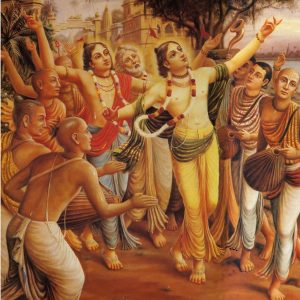 us upwards. A devotee shouldn’t have a doubt concerning which mantra to chant, the mantra which Jayanta gave Gopa-kumāra or the mahā-mantra. We should chant and respect whichever mantra has been given to us by our spiritual master. There is no rasa which remains outside the mahā-mantra; all rasa and everything else is within it. That is why it is called the mahā-mantra. From then on Gopa-kumāra chanted the above-mentioned mantra and progressed. Sva-priya-nāma-kīrtyā: he chanted that name which was most dear to him, and within this mantra his favourite name was Yaśodā-nandana. There are no deficiencies within any of the names in this mantra, but a sādhaka will chant whichever one is his favourite. A devotee in dāsya-rasa will feel that the name Rādhā-ramaṇa is not for him, but when a devotee who aspires to be a maidservant of Śrīmatī Rādhikā chants this name, feelings of spiritual bliss (ānanda) will at once arise within his heart.
us upwards. A devotee shouldn’t have a doubt concerning which mantra to chant, the mantra which Jayanta gave Gopa-kumāra or the mahā-mantra. We should chant and respect whichever mantra has been given to us by our spiritual master. There is no rasa which remains outside the mahā-mantra; all rasa and everything else is within it. That is why it is called the mahā-mantra. From then on Gopa-kumāra chanted the above-mentioned mantra and progressed. Sva-priya-nāma-kīrtyā: he chanted that name which was most dear to him, and within this mantra his favourite name was Yaśodā-nandana. There are no deficiencies within any of the names in this mantra, but a sādhaka will chant whichever one is his favourite. A devotee in dāsya-rasa will feel that the name Rādhā-ramaṇa is not for him, but when a devotee who aspires to be a maidservant of Śrīmatī Rādhikā chants this name, feelings of spiritual bliss (ānanda) will at once arise within his heart.
In many places in his commentary, Sanātana Gosvāmī explains one special point concerning Vṛndāvana. The residents of Goloka-Vraja have apparently worldly relationships with Kṛṣṇa, considering him to be their lover, son and friend. This is a distinct attribute of Gauḍīya Vaiṣṇavism and is not found in any other sampradāya. Kṛṣṇa is transcendental, the devotees there are transcendental, and their relationships are also transcendental, but they appear to be worldly. Especially this point was emphasised by Nārada and Uddhava as they were advising Gopa-kumāra in Dvārakā concerning the nature of his internal bhāva. Nārada and Uddhava admitted that even they do not possess this elevated bhāva, and without it no one can achieve Kṛṣṇa’s association in Goloka. The final aim and desired object of the Gauḍīya Vaiṣṇavas is this vraja-bhāva. Without achieving vraja-bhāva, their desires can never be fulfilled.
If someone has bhagavat-anubhūti, realisation of Bhagavān, their brahma-jñāna is covered, just as the rising sun covers the darkness of night. At that time one will desire to render service to a form of Bhagavān who possesses all six opulences, such as Nārāyaṇa or Rāmacandra. The desire to merge into Brahman will only be covered when one hears narrations of Bhagavān’s qualities and pastimes. When one hears how Bhagavān was compassionate to Ajāmila, Gajendra and others, he will see that Brahman is not capable of being so compassionate. “Bhagavān is full in six opulences and he can make the impossible possible”—when in this way one hears the glories of Bhagavān’s names (nāma), attributes (guṇa), forms (rūpa) and pastimes (līlā), then automatically his mood of appreciating the impersonal aspect will be covered. Similarly, once one hears of the pure mādhurya of Vraja, then his desire for bhagavat-anubhūti will be covered. If one is aware of Bhagavān’s six opulences as are Brahmā, Nārada and the four Kumāras, then vraja-bhāva will not come to him. If anyone hears this kathā from rasika devotees, then automatically it will eclipse his awareness of bhagavat-tattva. Try not to think that Kṛṣṇa is Svayam Bhagavān and that Rādhā is Svayam Bhagavatī. Simply hear narrations of his pastimes as they are described in the Tenth Canto of Śrīmad-Bhāgavatam and in this Bṛhad-bhāgavatāmṛta. Abandon this mood of remembering that Kṛṣṇa possesses all six opulences and that he is the cause of all causes and the origin of everything. Try to see how Kṛṣṇa is Dāmodara: if Yaśodā had not bound him to the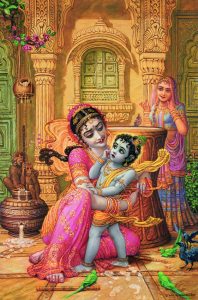 grinding mortar, he would always be seen as Bhagavān. While taking the cows out to graze, Kṛṣṇa says, “Hey, goad that cow a little.” Then Madhumaṅgala replies, “Why don’t you do it yourself? Do you think that I am your servant?” Kṛṣṇa likes this kind of exchange and his devotees there do also. They only know him as their friend and don’t consider who is superior and who is not. This is the most fortunate thing, and once one hears of this mādhurya-bhāva, his attachment for aiśvarya-bhāva is eclipsed.
grinding mortar, he would always be seen as Bhagavān. While taking the cows out to graze, Kṛṣṇa says, “Hey, goad that cow a little.” Then Madhumaṅgala replies, “Why don’t you do it yourself? Do you think that I am your servant?” Kṛṣṇa likes this kind of exchange and his devotees there do also. They only know him as their friend and don’t consider who is superior and who is not. This is the most fortunate thing, and once one hears of this mādhurya-bhāva, his attachment for aiśvarya-bhāva is eclipsed.
Bṛhad-bhāgavatāmṛta is an unprecedented literature. Just as Jaiva-dharma is an incomparable scripture, this book is also. All within this one book siddhānta, rasa, līlā, sādhana and sādya, and all Gauḍīya Vaiṣṇava tattva are fully delineated. And Sanātana Gosvāmī is so kind and merciful that he also wrote his own commentary on it. He wrote the commentary himself so that in the future no one would write a commentary that would misconstrue his bhāva. The commentary reveals the inner meanings of many items that come within the original text. In verse 2.3.168 the word sarasa is found, and in his commentary to this verse Sanātana Gosvāmī gives eight separate meanings of this word. First he applied it to Nārāyaṇa, then to Rāmacandra, then to Hanumān in dāsya- rasa, then to Subala, Śrīdāmā and so on in sakhya-rasa, then to Nanda Bābā and Yaśodā in vātsalya-rasa, then to the gopīs in mādhurya-rasa, then to Candrāvalī and finally to Śrīmatī Rādhikā and her sakhīs. In this way he revealed eight beautiful, new and newer meanings of the word sarasa that had never been revealed anywhere before. And then, overcome with humility, he writes that he has only given a hint of the full meanings. If any sādhaka from any line of faith reads this book, automatically he will move in Kṛṣṇa’s direction. Rūpa Gosvāmī himself has written that Sanātana Gosvāmī gave everything in his Bṛhad-bhāgavatāmṛta and in accordance with what is presented there, Rūpa Gosvāmī composed his own literatures. In this way the glories of Bṛhad-bhāgavatāmṛta are unlimited.

The following are excerpts from Walking with A Saint – Morning Walks and Conversations 2007/2008/2009 and 2010 by Śrīla Bhaktivedānta Nārāyaṇa Mahārāja
Walking with A Saint – Morning Walks and Conversations June 23, 2007 Morning Walk
Śrīpāda Padmanābha Mahārāja: Yesterday some of us were discussing Bṛhad-bhāgavatāmṛta, and a question came up regarding whether or not there is evidence in śāstra that the jīva has fallen from Goloka or Vaikuṇṭha. One devotee said he had asked a scholar in ISKCON, Kuśakrata dāsa, who has now passed away and who has translated many of the Gosvāmī’s books. Kuśakratha replied that there is evidence in Bṛhad-bhāgavatāmṛta. He said that when Gopa Kumāra arrived in Goloka, Kṛṣṇa received him, saying, “O my friend, you were lost for so long. Where were you?” Kuśakratha cited this as the evidence that the jīva left Kṛṣṇa’s līlā and is now returning.
Śrīla Bhaktivedānta Nārāyaṇa Mahārāja: No, no. The author of Bṛhad-bhāgavatāmṛta, Śrīla Sanātana Gosvāmī, has personally written an explanation to that exchange between Kṛṣṇa and Gopa Kumāra. They should read Śrīla Sanātana Gosvāmī’s explanation, not only his translation. Bhagavad-gītā, Śrīmad-Bhāgavatam, and all other such scriptures are evidence of the fact that the jīva does not fall from Vaikuṇṭha or Goloka. Kṛṣṇa comes to this world from Goloka. His associates also come from Goloka or Vaikuṇṭha, and therefore, when they manifest in this world, their birth here is only a play. Any associate of the Lord may come from there and play in that way. It is they who have come from Vaikuṇṭha and again have ‘gone back.’ This does not apply to conditioned souls; it is only for liberated persons.
Walking with A Saint – Morning Walks and Conversations April 11, 2008 Darśana after the morning walk
Śrīla Bhaktivedānta Nārāyaṇa Mahārāja: Śrīmatī Rādhikā sent Her own nitya-siddha associate, Jayanta, to help Gopa-kumāra. So, a nitya-siddha can act as guru.
Śrīpāda Dāmodara Mahārāja: Nitya-siddhas have no experience of suffering…
Śrīla Bhaktivedānta Nārāyaṇa Mahārāja: Generally what you say is correct. The sādhana-siddhas remember what they experienced in their life of sādhana. Even if they are now siddha, they can remember. It is likened to a man who was sleeping and suffering in a dream; even after he has awakened, he can remember his dream. Similarly, these self-realized persons can remember how they suffered, and their hearts melt for the suffering conditioned souls.
Śrīpāda Dāmodara Mahārāja: Whereas the nitya-siddha has no…
Śrīla Bhaktivedānta Nārāyaṇa Mahārāja: But the nitya-siddha can also act as guru – like Svarūpa in Śrī Bṛhad-bhāgavatāmṛta. Nitya-siddha devotees like Śrīla Narottama dāsa Ṭhākura, Śrīla Rūpa Gosvāmī, and Śrīla Sanātana Gosvāmī have all acted as guru.
Śrīpāda Dāmodara Mahārāja: They do not know what suffering is.
Śrīla Bhaktivedānta Nārāyaṇa Mahārāja: Who? Śrīla Sanātana Gosvāmī? If that were so, how would his heart melt, and how would he have done what he did?
Śrīpāda Mādhava Mahārāja: What to speak of Śrīla Sanātana Gosvāmī? How much suffering Śrīmatī Rādhikā experiences; how Her in-laws do not allow Her to go to Kṛṣṇa; how they create so many problems for Her.
Madhuvrata dāsa: That is not material suffering.
Śrīla Bhaktivedānta Nārāyaṇa Mahārāja: Generally a sādhana-siddha has more mercy for the conditioned souls, in the sense that he comes more often, but in a special case Kṛṣṇa may arrange that His nitya-siddha associate will also come to give mercy.
Walking with A Saint – Morning Walks and Conversations June 16, 2008 Morning Walk
Vṛndāvana dāsa: Can they come again to the material world?
Śrīla Bhaktivedānta Nārāyaṇa Mahārāja: They will not come. Moreover, they have no chance to do bhakti. That is why it has been told in śāstra that mukti is like a tigress. Mukti-vyāghryāḥ. Like a tigress, mukti swallows us. If a tiger eats someone, that person does not remain alive. It is explained in Śrī Bṛhad-bhāgavatāmṛta that if a great soul’s glance lands upon the living entity stuck in the brahmajyoti while that great soul is travelling through it, that particular living entity may be released. This is the only way for such release.
Walking with A Saint – Morning Walks and Conversations January 25, 2009 Morning Walk
Śrīpāda Padmanābha Mahārāja: But sometimes, especially in ISKCON, devotees have the conception that by the mercy of Prabhupāda, simply by chanting sixteen rounds throughout their life and by following the regulative principles and distributing books, then, at the end of their lives, Prabhupāda or Lord Caitanya will come and take them to the spiritual world by special mercy.
Śrīla Bhaktivedānta Nārāyaṇa Mahārāja: They will develop, but they will not immediately reach perfection.
Śrīpāda Padmanābha Mahārāja: But in this regard, when you were discussing mahat-saṅga (the association of great saints), you explained that there is a śloka which tells how Gopa-kumāra gave his disciple that blessing.
Śrīla Bhaktivedānta Nārāyaṇa Mahārāja: If the guru is like Kṛṣṇa, Caitanya Mahāprabhu, 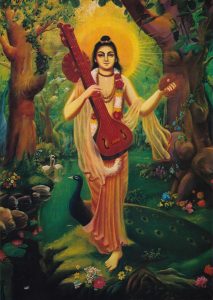 or Nārada Muni, he may give such blessings. And still, although Nārada Ṛṣi gave mercy to so many, he never sent anyone directly to Goloka Vṛndāvana.
or Nārada Muni, he may give such blessings. And still, although Nārada Ṛṣi gave mercy to so many, he never sent anyone directly to Goloka Vṛndāvana.
Only if a guru comes directly from Rādhikā and is ordered by Her to come for that very purpose can the disciple go at once to his ultimate destination. Otherwise, it is not so easy.
Śrīpāda Mādhava Mahārāja: And Jana Śarmā, the disciple of Gopa-kumāra, had performed so much bhajana.
Śrīla Bhaktivedānta Nārāyaṇa Mahārāja: Jana Śarmā’s guru is an associate of Rādhikā, and Rādhikā gave a special order that Jana Śarmā be taken immediately to Goloka Vṛndāvana.
Walking with A Saint – Morning Walks and Conversations May 20, 2009 Morning Walk
Rāmacandra dāsa (from Delhi): In Bṛhad-bhāgavatāmṛta, Śrīla Sanātana Gosvāmīpāda narrates Gopa-kumāra’s discussion with the Mathurā brāhmaṇa. Therein Gopa-kumāra tells the Mathurā brāhmaṇa that all the demons killed by Kṛṣṇa when He appeared in this material world are also present in Goloka Vṛndāvana beyond the universe. However, the demons present in Goloka are of a spiritual nature, and in fact Kṛṣṇa does not kill them there.
For example, regarding the pastime of Keśī, the horse demon, Śrī Kṛṣṇa defeats him and then Kṛṣṇa’s friends sit on him and ride him. In the case of Ariṣṭāsura, in Goloka Kṛṣṇa makes him pull a bullock cart. In the case of Kāliya-nāga, in Goloka Kṛṣṇa overpowers him, and then He and the gopīs dance together on his hoods. Regarding the pastime of Kṛṣṇa going to Mathurā and leaving all the Vrajavāsīs in a very deep mood of separation, in Goloka that departure is only for a short time; Kṛṣṇa very soon returns to Vraja.
In one or two places you have said that the pastimes of leaving Vṛndāvana for Mathurā and the pastimes with the demons do not take place in Goloka Vṛndāvana. You said that the Vrajavāsis have the bhāva, or mood, that such pastimes have taken place, but that these pastimes take actual form only when Kṛṣṇa is in this world. However, from what Śrīla Sanātana Gosvāmī tells in Bṛhad-bhāgavatāmṛta, it seems that Kṛṣṇa again and again leaves and comes back to Vṛndāvana from Mathurā, and that the demons do come there but they are not killed.
This is what Śrīla Sanātana Gosvāmīpada narrates in Bṛhad-bhāgavatāmṛta. Śrīla Jīva Gosvāmīpada says that there are no demons in transcendental Goloka Vṛndāvana.
Śrīla Bhaktivedānta Nārāyaṇa Mahārāja: What Śrīla Sanātana Gosvāmī says is correct.
Rāmacandra dāsa: It is all right? That would mean that in Goloka Vṛndāvana He leaves for Mathurā. It is written in Bṛhad-bhāgavatāmṛta that Akrūra came to Vraja, and Kṛṣṇa left with him.
Śrīla Bhaktivedānta Nārāyaṇa Mahārāja: That separation lasted for three months; ninety days.
Regarding the pastimes of killing demons, other śāstras also say that they do not occur in Goloka Vṛndāvana; only the bhāva, or conception, of killing pastimes is there.
Rāmacandra dāsa: Yes, this is the consideration of Śrīla Jīva Gosvāmīpāda. But Śrīla Sanātana Gosvāmī says that pastimes with the demons actually occur.
Śrīla Bhaktivedānta Nārāyaṇa Mahārāja: What Śrīla Sanātana Gosvāmīsays is perfect. Both are perfect. We reconcile the two opinions; it is not that one is right and the other is wrong. Śrīla Jīva Gosvāmī is in the line of Śrīla Sanātana Gosvāmī. He came after him, so he knew his mood. He read Bṛhad-bhāgavatāmṛta, so why does he appear to give a different opinion? We will have to consider this. We may also consider whether or not Kaṁsa is there in Goloka Vṛndāvana, and whether or not Kṛṣṇa kills him there.
Rāmacandra dāsa: According to Śrīla Sanātana Gosvāmīpada, Kaṁsa was there and Kṛṣṇa killed him.
Śrīla Bhaktivedānta Nārāyaṇa Mahārāja: We may also consider whether or not Kṛṣṇa takes birth from Yaśodā in Goloka.
Rāmacandra dāsa: This is not addressed in Bṛhad-bhāgavatāmṛta. It is just stated that He is the son of Mother Yaśodā.
Śrīla Bhaktivedānta Nārāyaṇa Mahārāja: Jīva Gosvāmī says that Mother Yaśodā always thinks, “Kṛṣṇa is my son,” but He does not take birth from her womb. Or Jaṭilā and Kuṭilā – they are present in Goloka Vṛndāvana, but in our position we cannot understand in what way. Some of the pastimes of Śrī Śrī Rādhā-Kṛṣṇa are nitya-līlā; they are eternal, manifest both here and there in Goloka Vṛndāvana. And other pastimes are naimittika-līlā, manifest in form here, but only in mood there. Jaṭilā’s service to Śrī Śrī Rādhā-Kṛṣṇa is part of Their nitya-līlā.
Walking with A Saint – Morning Walks and Conversations May 21, 2009 Morning Walk
Viṣṇu dāsa: When Gopa-kumāra reached Vaikuṇṭha, the residents of Vaikuṇṭha prohibited him from speaking about the pastimes of Kṛṣṇa in Vṛndāvana. They told him that the Lord’s pastimes as a gopa were performed for the purpose of deception [to deceive demons like Kaṁsa and Pūtanā]. So my question is this: Are the Vaikuṇṭha residents unaware of the glory of Kṛṣṇa’s pastimes in Vṛndāvana? Are they unaware that these pastimes in Vṛndāvana are higher than those of Vaikuṇṭha?
Śrīla Bhaktivedānta Nārāyaṇa Mahārāja: If the residents of Vaikuṇṭha knew the glory of Vṛndāvana, they would not be residing in Vaikuṇṭha. They do not know its glories.
Viṣṇu dāsa: But even the people staying on this planet are aware.
Śrīla Bhaktivedānta Nārāyaṇa Mahārāja: That is why this planet is called sādhana-bhūmi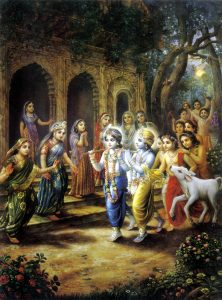 (the land of sādhana). Neither the heavens nor the lower planetary systems are called sādhana-bhūmi. It refers only to this planet Earth, and especially to Vraja-maṇḍala, Vṛndāvana, and Navadvīpa, which is non-different from Vṛndāvana. Here, whatever mood in which you perform your spiritual practices, you will attain that perfection.
(the land of sādhana). Neither the heavens nor the lower planetary systems are called sādhana-bhūmi. It refers only to this planet Earth, and especially to Vraja-maṇḍala, Vṛndāvana, and Navadvīpa, which is non-different from Vṛndāvana. Here, whatever mood in which you perform your spiritual practices, you will attain that perfection.
Śrīpāda Mādhava Mahārāja: We can practice here, whereas in other planetary systems we cannot do so.
Śrīla Bhaktivedānta Nārāyaṇa Mahārāja: Even those who worship Rāmānujācārya and his followers think that Śrī Kṛṣṇa and all other incarnations come from Nārāyaṇa. They think that Kṛṣṇa is a expansion of Nārāyaṇa. They challenge, “It is not possible for us to serve Śrī Kṛṣṇa’s gopīs, or His mother and father, or His other associates. Nārāyaṇa never comes to this world, so Nārāyaṇa’s manifestation, Śrī Kṛṣṇa, comes here.”
Viṣṇu dāsa: Sometimes we meet devotees, even in ISKCON, who cannot understand that there is something higher than Vaikuṇṭha. They have no desire to understand, so their faith does not develop when we speak to them. Should we just consider that at present this is their adhikāra (spiritual qualification), and there is not much we can do to change their minds?
Śrīla Bhaktivedānta Nārāyaṇa Mahārāja: Yes. That is okay.
Śrīpāda Padmanābha Mahārāja: One more point about this, Śrīla Gurudeva. You have said many times that the jīva’s svarūpa (eternal constitutional nature and identity) is already fixed. So, is it that this is the svarūpa of some of the persons in other sampradāyas who are worshiping Lakṣmī-Nārāyaṇa? Even though they are here on this Earth planet, where Śrī Caitanya Mahāprabhu appeared, could it be that according to their svarūpa they are meant to go to Vaikuṇṭha?
Śrīla Bhaktivedānta Nārāyaṇa Mahārāja: This is also true in Mahāprabhu’s pastimes. Śrīvāsa Paṇḍita, Anupama, Murāri Gupta, and other associates were worshipers of Nārāyaṇa and Kṛṣṇa’s other incarnations.
Veṇu-gopāla dāsa: Śrīla Gurudeva, it is stated in Śrī Bṛhad-bhāgavatāmṛta that Gopa-kumāra’s sādhaka and siddha form are the same. How is this possible?
Śrīla Bhaktivedānta Nārāyaṇa Mahārāja: Gopa-kumāra was a special case. He was actually from Goloka Vṛndāvana, and he came here to help us conditioned souls. He thus took birth in the Govardhana area, as a cowherd boy, and he received a guru named Jayanta, who was personally sent by Rādhikā. There was some change in his sādhaka body here, and when he went to Vaikuṇṭha, his body became transcendental.
Śrīpāda Mādhava Mahārāja: His body was not four-handed when he visited Vaikuṇṭha, but it was cinmaya (transcendental, of spiritual substance)
Walking with A Saint – Morning Walks and Conversations June 12, 2010 Darśana after the walk
Vicitrī dāsī: Śrīla Sanātana Gosvāmīpāda has described that when Kṛṣṇa goes to Mathurā to kill Kaṁsa, He stays for some time, and then He comes back after a short time and makes the Vrajavāsīs forget He had gone. Then He leaves again, and this goes on again and again. He comes and goes, comes and goes, many, many times.
Śrīla Bhaktivedānta Nārāyaṇa Mahārāja: This is right.
Vicitrī dāsī: So beautiful, but no one else is telling this.
Śrīla Bhaktivedānta Nārāyaṇa Mahārāja: Śrīmad-Bhāgavatam has told only that He left. But Bṛhad-bhāgavatāmṛta has told all these details in brief.
Vicitrī dāsī: You didn’t mention that last night.
Śrīla Bhaktivedānta Nārāyaṇa Mahārāja: Whatever Bṛhad-bhāgavatāmṛta has told, top to bottom, is all correct.
Walking with a Saint – Morning Walks and Conversations 2010 Excerpt of a darśana with Śrīla Bhaktivedānta Nārāyaṇa Mahārāja in Mathurā, on June 25, 1992:
Śyāmarāṇī dāsī: Sanātana Gosvāmī’s Bṛhad-bhāgavatāmṛta states that when Kṛṣṇa went from Vṛndāvana to Mathurā and was there for a short time, He returned to Vraja and had more pastimes with the people there. And then He went back to Mathurā again – and after that He again returned to Vraja and again performed the Kāliya pastime. And then again, and then again, He went back and forth. I don’t understand. This is a new concept for me.
Śrīla Bhaktivedānta Nārāyaṇa Mahārāja: Those explanations and stories are of Goloka, not of here. Try to understand. In Goloka, all these līlās come in repetition, but everyone thinks that they are happening for the first time. In this world the exciting freshness of relationships dwindles by repeated exchanges. But, there, in the pastimes of Kṛṣṇa, everything becomes newer and newer. Even when the pastimes come in repetition, everyone sees them as quite new.
The Vrajavāsīs see that Kṛṣṇa is going from Vṛndāvana to Mathurā for the first time, and the Mathurāvāsīs see that He is coming for the first time. Nitya nava navāyamāna (eternally everfresh and new). Everyone in the spiritual world considers that this is the first time the pastime is going on.
Śyāmarāṇī dāsī: Is the pastime different each time, or is it the same?
Śrīla Bhaktivedānta Nārāyaṇa Mahārāja: Whether it is different, or not different, still, they are seeing it as though it is happening for the first time. If they were to think that it is coming and going so many times, they would then judge whether or not it is the same or there are some differences. But, if all are seeing that, “This is a new one,” never having taken place before, then there is no question of whether it is the same or different.
Śyāmarāṇī dāsī: I thought that all the pastimes are eternal. Now it seems like they are happening again and again. I thought each pastime didn’t have any beginning or end.
Śrīla Bhaktivedānta Nārāyaṇa Mahārāja: Yes, no beginning and no end.
Śyāmarāṇī dāsī: If there is no beginning and no end, then where is the question of repetition?
Śrīla Bhaktivedānta Nārāyaṇa Mahārāja: There is no repetition – it is all brand new. This is the effect of Yogamāyā. She is so clever, so intelligent, so powerful, and so sweet, that she covers the intelligence of even Kṛṣṇa and Rādhikā. She makes Them taste all Their pastimes as newer and newer.
Śrīmatī Rādhikā has seen Kṛṣṇa so many times. In fact, on the previous night She spent the entire night with Him. But then, when She returned to Her room in the morning and Yaśodā called Her [to come to Yaśodā’s home to cook Kṛṣṇa’s breakfast], She was thinking that this would be Her first day of going to Yaśodā Bhavan (Yaśodā’s home). She considered that She had heard the name of Kṛṣṇa but had never seen Him.
Kṛṣṇa considers that He had heard the name of Rādhikā, and the fact that that She was so sweet, beautiful, and generous. He was thus eager to see Her. Rādhikā is also always eager to see Him, and when She sees Him, She becomes like a deer with unclosing eyelids. Rādhikā and Kṛṣṇa have no time to see whether or not anyone is watching Them look at each other. Śrīmatī Rādhikā is simply tasting – drinking and drinking, and continuing to drink.
Śyāmarāṇī dāsī: If the pastime of Kāliya is eternal, where is the question of repetition?
Śrīla Bhaktivedānta Nārāyaṇa Mahārāja: There is no repetition.
Śyāmarāṇī dāsī: But it says in Śrī Bṛhad-bhāgavatāmṛta that it has happened again and again.
Śrīla Bhaktivedānta Nārāyaṇa Mahārāja: It is said in this way only for sādhaka jīvas. We are sādhakas, and actually we are not even sādhakas. What are we?
Śyāmarāṇī dāsī: Trying to be sādhakas.
Śrīla Bhaktivedānta Nārāyaṇa Mahārāja: When you attain the stage of taste in bhajana, this question won’t arise. You will see the pastimes as quite new; quite new. Even if something is not new, all things of Kṛṣṇa will seem quite new, and you will always want to see it. All questions will be forgotten.
Have you understood my answer? Everything there is so beautiful, and quite new. The idea that these pastimes have come again – no eternal associate of the Lord ever thinks in this way. Even though Rādhikā has seen Kṛṣṇa – tasting pastimes with Him the entire previous night, still, [the next time She sees Him] She says, “I have not seen Him before. Who is He?” This is so beautiful.
Śyāmarāṇī dāsī: Also in Bṛhad-bhāgavatāmṛta, Gopa Kumāra was addressed as a newcomer and it seemed like he entered…
Śrīla Bhaktivedānta Nārāyaṇa Mahārāja: All others consider that he is a newcomer, but Kṛṣṇa treats him as one of His old companions.
Excerpt from a lecture by Śrīla Bhaktivedānta Nārāyaṇa Mahārāja in Badger USA, on May 21, 2004:
Śrīla Bhaktivedānta Nārāyaṇa Mahārāja:
mahat-saṅgama-māhātmyam
evaitat paramādbhutam
kṛtārtho yena vipro ‘sau
‘sadyo ‘bhūt tat-svarūpavat
Bṛhad Bhagavātāmṛta 2.7.14
[The glory of mahat-saṅga, the association of a mahā-bhāgavata, is extremely miraculous. By the effect of such saṅga, the brāhmaṇa Janaśarma immediately became perfect like his gurudeva Śrī Svarūpa (Gopa Kumāra).]
Svarūpa is the associate of Śrīmatī Rādhikā. He placed his hand on the head of the Mathurā brāhmaṇa, and that brāhmaṇa’s life instantly became fully successful. He became a realized soul, he began to weep, his heart melted, tears flowed from his eyes, and he at once went to Goloka Vṛndāvana and became a cowherd friend of Śrī Kṛṣṇa.
Do not doubt this. The brāhmaṇa had not undergone any practice of the principles of bhakti (sādhana). He had not performed śravaṇaṁ and kīrtanam (hearing and chanting the glories of the Lord), but still he received so much mercy from Śrī Kṛṣṇa and Śrīmatī Rādhikā. Have no doubt in this. It was to reply to any doubt that Śrīla Sanātana Gosvāmī wrote this śloka.
Śrīpāda Dāmodara Mahārāja: The brāhmaṇa was chanting gopāla-mantra. Is that not in the category of śravaṇaṁ?
Śrīla Bhaktivedānta Nārāyaṇa Mahārāja: Was he engaging in śravaṇaṁ, kīrtanam and other limbs of bhakti?
Śrīpāda Dāmodara Mahārāja: He was chanting the gopāla-mantra.
Śrīla Bhaktivedānta Nārāyaṇa Mahārāja: Yes, but he did nothing else.
Image/Art made possible by Pixabay.com & Krishnapath.org


